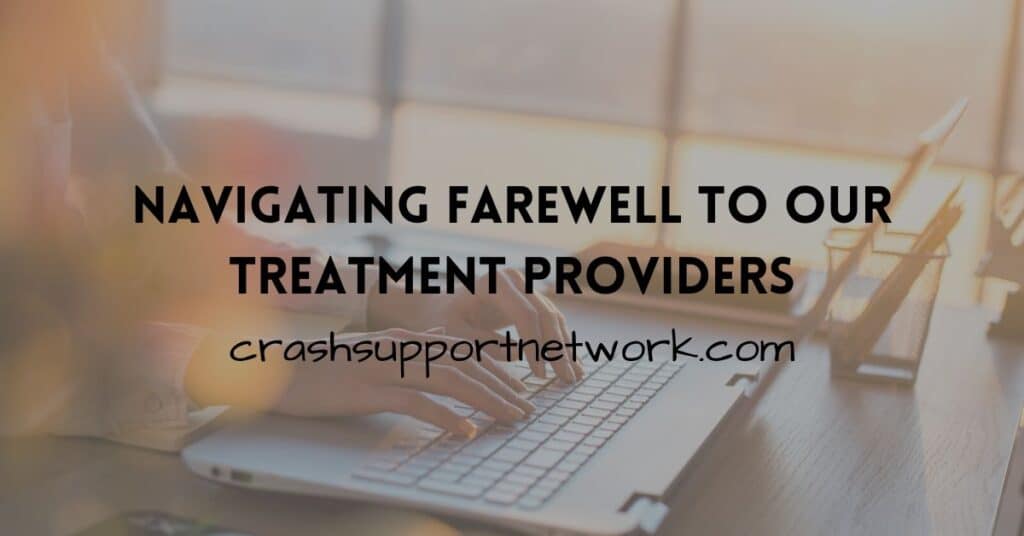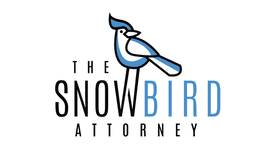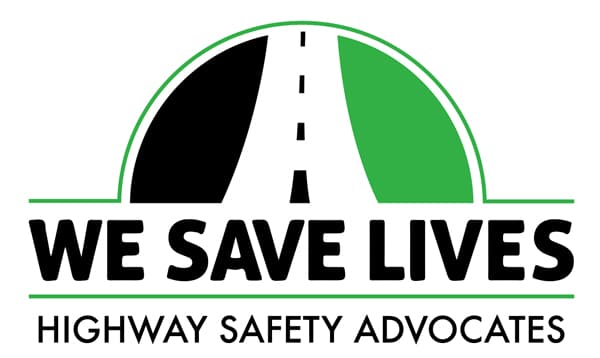
In the aftermath of a motor vehicle crash or any traumatic event, each treatment provider that you see often becomes more than just a medical professional—they become pillars of support and beacons of hope during a challenging journey towards our recovery. Some even become our friends – how could they not? A vast majority of crash survivors may see numerous treatment providers for months, years or even ongoing. Yet, as the healing progresses, the time may come to part ways and saying goodbye to these dedicated individuals can evoke a whirlwind of emotions. It’s a mixture of relief at reaching a milestone in our recovery journey, gratitude for the care and support received, and sadness at saying goodbye to someone who has played such a significant role in our life.
It’s a Unique Bond
The bond formed with a treatment provider is unique. It’s built on a foundation of trust, empathy, and shared determination to overcome obstacles and reclaim one’s well-being. From the initial diagnosis to the final session, treatment providers offer not only medical expertise but also unwavering support and encouragement. Saying farewell to a treatment provider who has been an integral part of our recovery process is a poignant moment. It was hard for me at times but it’s an acknowledgment of the progress I’ve made and the hurdles I’ve overcome. It’s also a reminder of the challenges endured and the journey that still lies ahead.
The farewell may be marked by a heartfelt conversation, a handwritten note, or a simple gesture of appreciation. However it’s expressed, it’s essential for us to take a moment to reflect on the impact our treatment providers have had on our lives. Moving on after treatment, especially following a significant recovery journey like one from a motor vehicle crash, involves both physical and emotional adjustments. It’s a time of transition where you’ll be applying what you’ve learned during treatment to daily life, adjusting to new routines, and perhaps facing the world with a different perspective. Here are some strategies to help you navigate this phase.
Reflect on Your Journey
Take time to appreciate the progress you’ve made. Reflecting on where you started and where you are now can provide a sense of accomplishment and closure.
Set New Goals
With the completion of your treatment, it’s important to look forward and set new personal or professional goals. These could be related to your health, fitness, career, or personal development.
Maintain a Support System
Continue to lean on friends, family, and any support groups you’ve become part of. While the nature of your interactions may change, these networks remain vital for emotional support. Sharing your experiences and feelings can be therapeutic and provide a sense of community. If you haven’t already, consider joining our support group: The Crash Support Network Group where you can engage with over a thousand others who have gone through similar experiences. Peer support can offer unique understanding and encouragement.
Adopt Healthy Habits
The end of formal treatment doesn’t mean the end of self-care. Try to maintain healthy habits formed during your recovery, such as regular exercise, a balanced diet, and sufficient rest, to support ongoing well-being.
Monitor Your Progress
Even though you are no longer seeking treatment, continue to keep track of your achievements and setbacks in a journal or diary. Monitoring your progress can help you stay motivated and identify areas that might need more attention or a different approach.
Be Patient with Yourself
Recovery is an ongoing process. There may be days that are harder than others, and that’s okay. Be kind to yourself and recognize that healing, both physical and emotional, takes time.
Seek Ongoing Professional Support if Needed
If you find yourself struggling, don’t hesitate to seek professional help. This could be in the form of therapy, counseling, or check-ins with your healthcare provider.
Set Realistic Expectations
Understand that recovery can continue even after treatment ends. Be patient with your body and mind, and set realistic expectations for what comes next.
Adjust to New Routines
Your daily routine may have changed significantly during treatment. Take time to adjust to new or resumed routines, recognizing that this re-adjustment is a process that requires flexibility and self-compassion.
Moving on after treatment is a significant milestone. It’s an opportunity to apply what you’ve learned, embrace change, and continue growing. Remember, moving on doesn’t mean forgetting the journey you’ve had; it means carrying forward the strength, knowledge, and resilience you’ve gained into the next chapter of your life.
S. Dawne McKay is a survivor of a horrific crash that changed her life forever. Dawne shares her personal journey as a Crash Survivor Blogger and also collaborates with crash survivors as Guest Bloggers allowing them an opportunity to share their stories. Dawne is also the author of the book, “Talk Crash to Me – What to Expect After Surviving a Collision and How to Manage Your Recovery” which is available for purchase on Amazon.
The Crash Support Network is a unique one-of-a-kind website consisting of an online support group, a crash survivor blog, a quarterly newsletter, “Sharing Our Recovery” as well as highly informative articles. Our website is based on relationship-building and puts the needs of survivors first by creating a helpful resource for victims and survivors of motor vehicle crashes





